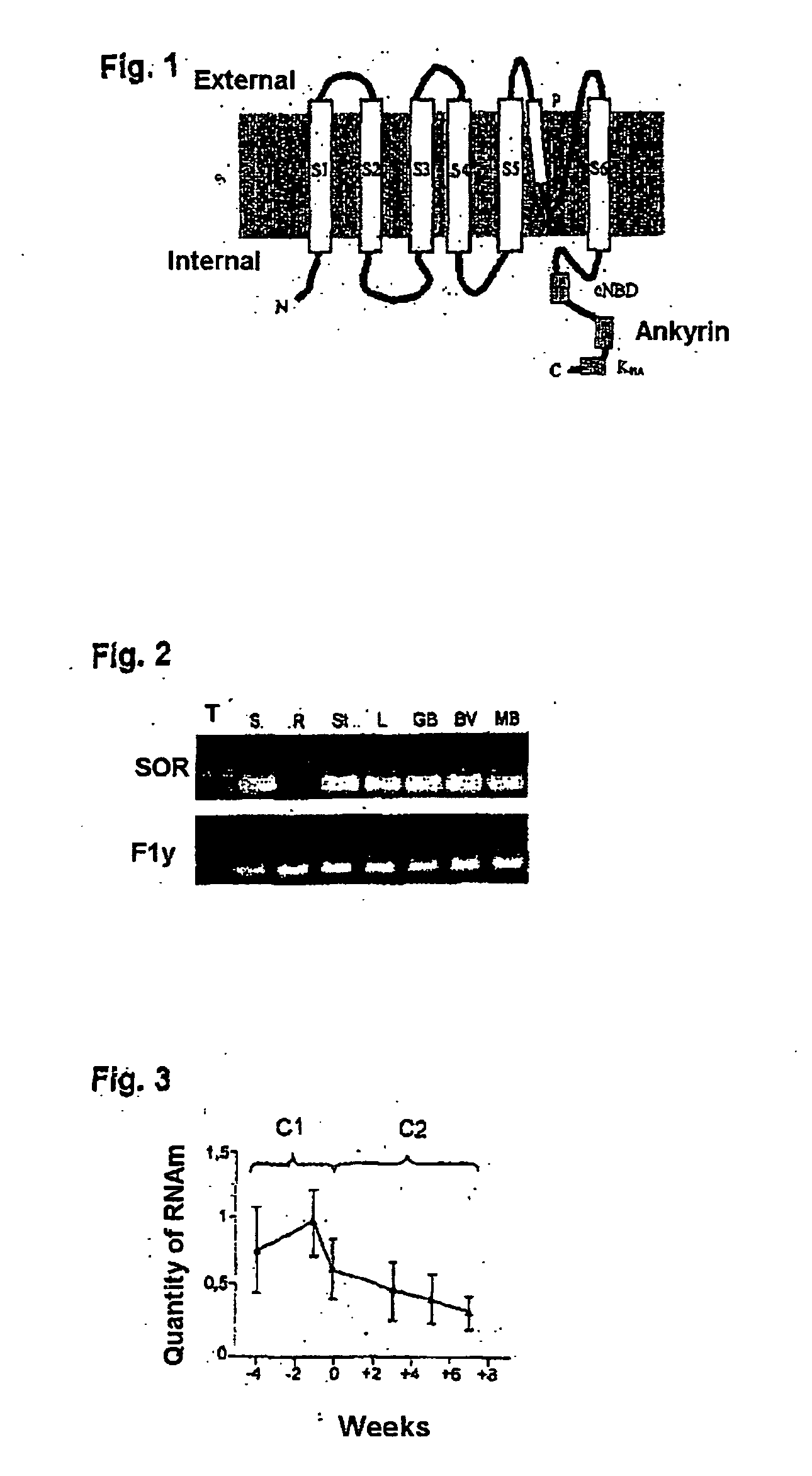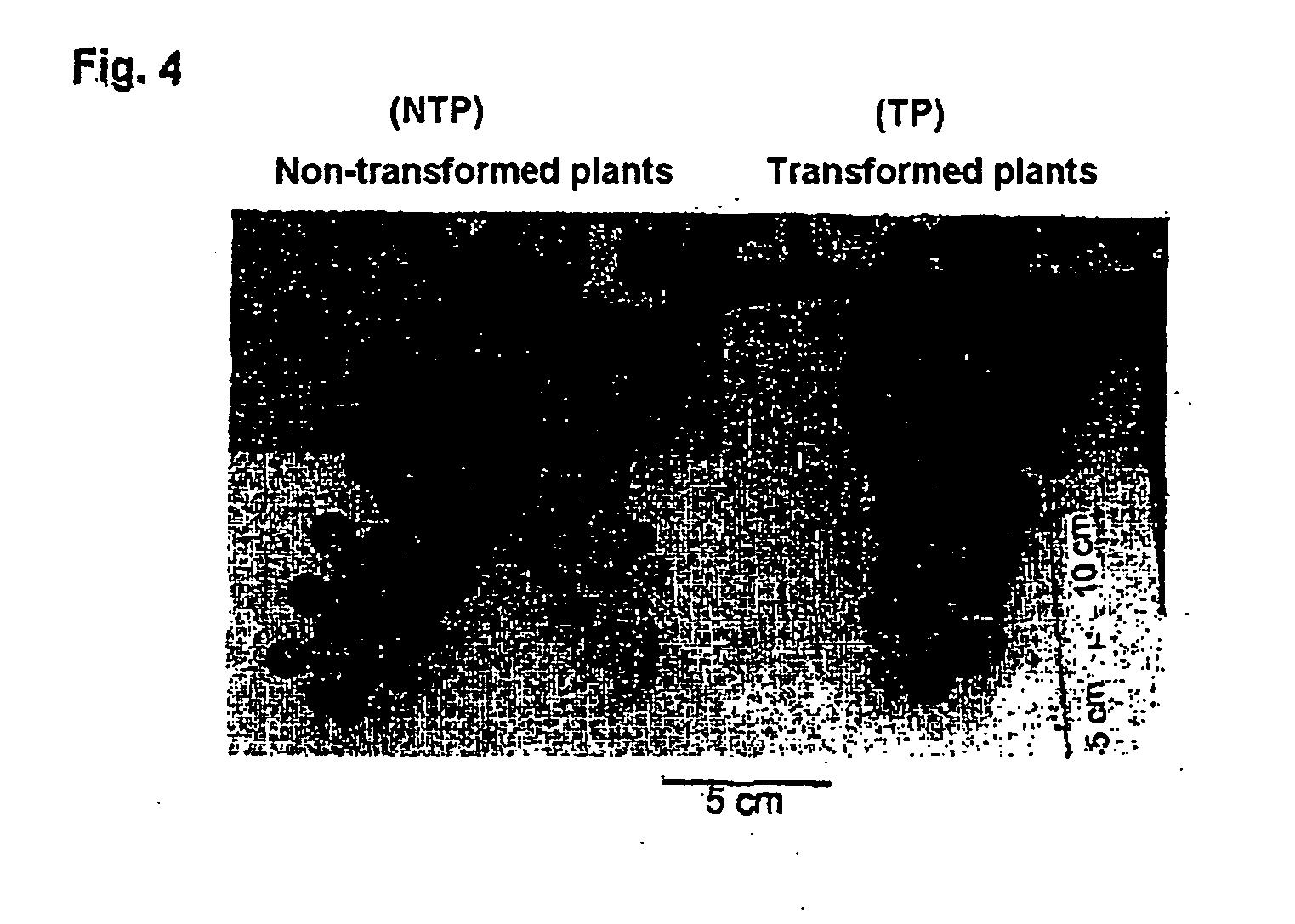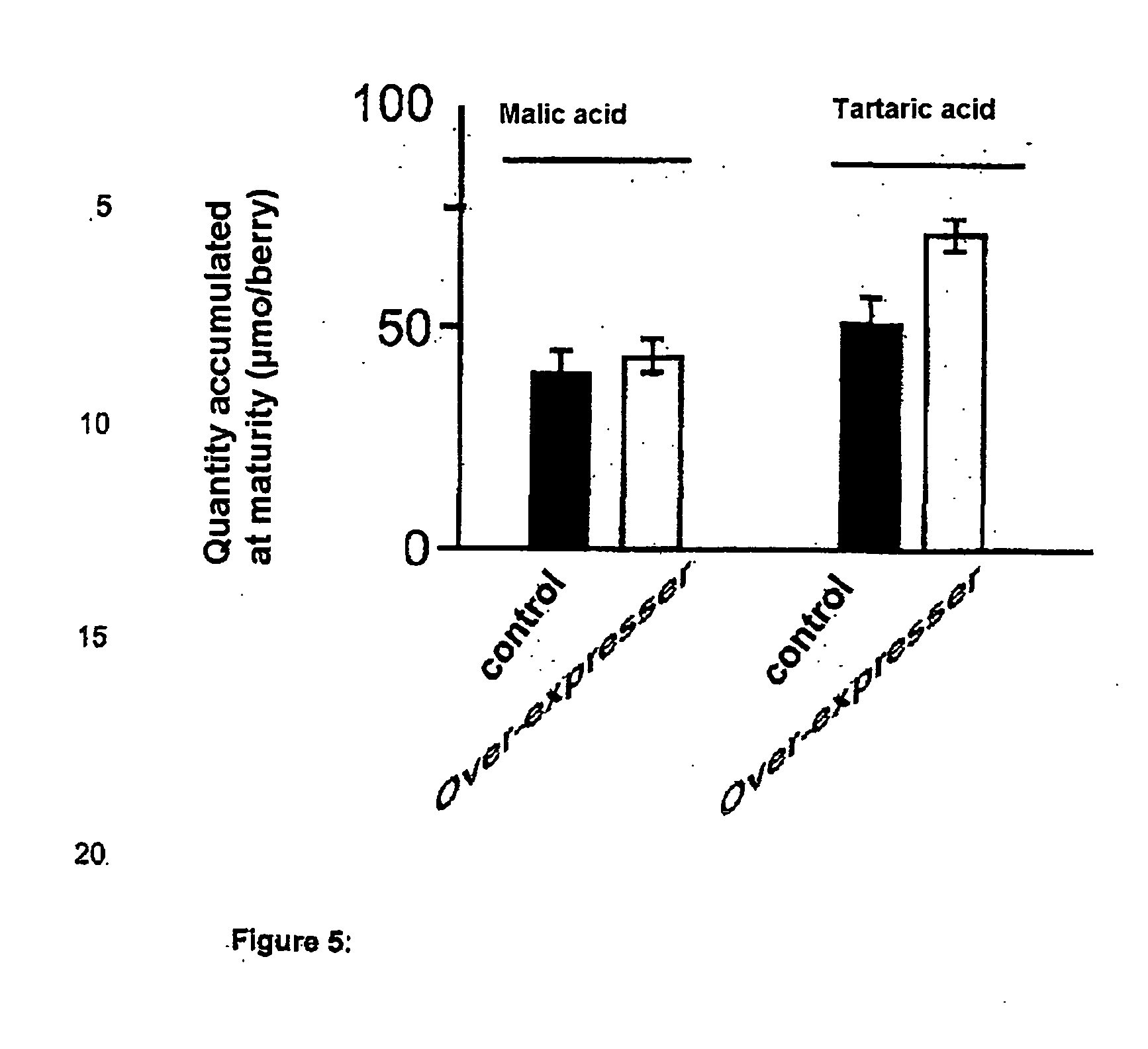Potassium channels
a technology of potassium channels and potassium ions, applied in the field of plant agronomic qualities, can solve the problems of difficult to influence the size of storage organs, quantity synthesised in a given stage of development remains accumulated for a long time in cells, and is subject to very little degradation
- Summary
- Abstract
- Description
- Claims
- Application Information
AI Technical Summary
Benefits of technology
Problems solved by technology
Method used
Image
Examples
examples
Example of Implementation of the Method for Obtaining Transformed Cells and Verification
[0098] To obtain a transformed plant an expression of the gene VvSOR (or SEQ ID No. 1) is modified, this consisting in carrying out a transgenesis. To carry out this transgenesis an embryogenic cell is transformed with a recombinant vector which incorporates an additional copy of the cellular gene of interest. It is then checked that the transgenesis has been correctly carried out by measuring the expression of the cellular gene and the foreign gene.
Equipment and Methods
[0099] The plant as well as the methods used for carrying out the genomic analyses were described by Pratelli, R., et al., 2002, Plant Physiology 128, 564-577.
Screening of a Bank of DNAc of Vitis Vinifera
[0100] Bank of DNAc of berries of Vitis Vinifera is screened to identify the SEQ ID No. 1 with two probes prepared from DNAc of Arabidopsis thaliana (DNAc AtSKOR and DNAc AtKCO1), each of these DNAc's encoding a rectifying...
PUM
| Property | Measurement | Unit |
|---|---|---|
| size | aaaaa | aaaaa |
| sizes | aaaaa | aaaaa |
| volume | aaaaa | aaaaa |
Abstract
Description
Claims
Application Information
 Login to View More
Login to View More - R&D
- Intellectual Property
- Life Sciences
- Materials
- Tech Scout
- Unparalleled Data Quality
- Higher Quality Content
- 60% Fewer Hallucinations
Browse by: Latest US Patents, China's latest patents, Technical Efficacy Thesaurus, Application Domain, Technology Topic, Popular Technical Reports.
© 2025 PatSnap. All rights reserved.Legal|Privacy policy|Modern Slavery Act Transparency Statement|Sitemap|About US| Contact US: help@patsnap.com



